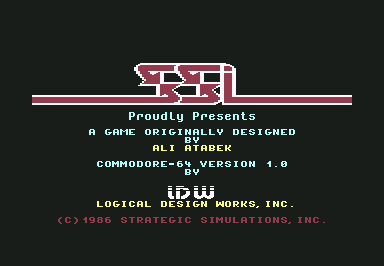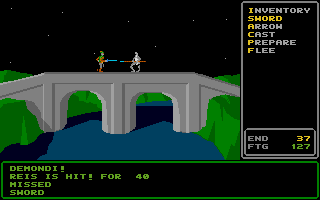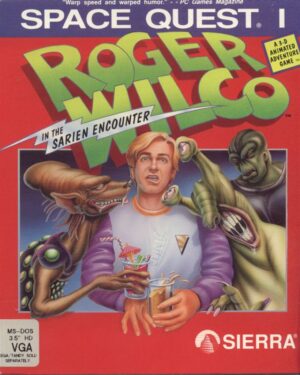Retro Replay Review
Gameplay
Rings of Zilfin throws you straight into a vast, low-barrier fantasy world with no traditional character creation beyond naming your hero and choosing a difficulty level. The ten difficulty settings adjust your starting gold, items and resources, meaning each playthrough can start with a modest purse or a chest of equipment. This simplicity keeps the focus firmly on exploration and narrative rather than on fiddly stat min/maxing, making it a great entry point for RPG newcomers.
(HEY YOU!! We hope you enjoy! We try not to run ads. So basically, this is a very expensive hobby running this site. Please consider joining us for updates, forums, and more. Network w/ us to make some cash or friends while retro gaming, and you can win some free retro games for posting. Okay, carry on 👍)
Travelling between more than a hundred villages, towns and dungeons plays out on a charming side-scrolling map that lets you set your walking speed and monitor Reis’s fatigue in real time. Along the way you’ll discover water pools that grant random effects when drunk and a variety of wild plants that can be gathered, stored and consumed—some healing, some poisonous and some downright magical. This herb and pool system adds an almost survival-game layer to your quest, encouraging you to stockpile and experiment rather than simply buying potions at the nearest shop.
Combat is pseudo-real-time: when you run into a monster you’re dropped into a simple battle screen where you choose to attack with weapons, fire arrows or cast spells you’ve prepared. Ground-based foes can be hacked at with swords, while airborne enemies like flying skulls demand ranged attacks or magic, emphasizing tactical choice even in a minimalist interface. Furthermore, the game’s non-linearity lets you pursue side missions, trade goods between towns or dive into caves on your own schedule—selling wares across kingdoms can be just as rewarding as delving into a dungeon.
Graphics
By today’s standards Rings of Zilfin’s graphics are rudimentary, but for an early fantasy RPG they possess a raw, nostalgic charm. Character and monster sprites are blocky yet distinct, with each creature—be it a mutated Barvil bat or the ominous Zumagin death-ray demon—feeling unique. The simple cut-scene images that bookend important story moments have a storyboard quality that, while static, do a fine job of evoking the game’s mystical atmosphere.
The side-scroll travel sequences depict rolling hills, forests and occasional cave entrances in a limited but serviceable palette that heightens the sense of wandering an enchanted realm. Town layouts are cleanly drawn: walk up and enter up to three buildings per settlement to shop, rest or gather information. NPC portraits don’t exist, so you rely on text descriptions and dialogue, which keeps the focus on imagination over high-fidelity visuals.
The user interface is entirely keyboard-driven, presenting menus and command lists in plain text. While this means no flashy animations or icons, it also ensures that every action is swift to execute once you learn the key bindings. For modern audiences seeking polished graphics this might feel dated—but for players attuned to early CRPGs, it’s part of the title’s enduring mystique.
Story
The narrative of Rings of Zilfin is deceptively straightforward: an evil necromancer named Lord Dragos has seized one of two rings that, when worn together, grant invincibility to their bearer. Your hero, Reis, is a young boy with fledgling magical talents who must outrun Dragos’ minions, find the legendary Zilfin wizards and secure the second ring. The opening cut-scene sets a tense tone as Reis narrowly escapes through his village, immediately pulling you into the stakes of the quest.
As Reis journeys through four distinct kingdoms, each dotted with villages, inns, shops and shape-shifting locals, the story unfolds via conversations and environmental clues rather than elaborate dialogue trees or cinematic sequences. Some townsfolk hide darker secrets—shape-shifters may lurk behind friendly façades—and uncovering these twists requires exploration and a willingness to ask questions at every inn and market stall. This conversational design encourages players to think like detectives, gathering scraps of lore that slowly piece together the true history of Batiniq.
Spellcasting and resource gathering tie directly into the narrative, since mastering higher-level Apprentice, Master and Grand Master spells can open new paths or save your skin in pivotal moments. The game rarely holds your hand, letting you wander off the beaten track to trade items, forage for herbs or confront minor subplots that deepen the world. While the core tale remains linear—retrieve the ring, thwart Dragos—the open-ended approach to side activities fosters a sense of genuine discovery.
Overall Experience
Rings of Zilfin may feel like a relic to players accustomed to modern RPGs, but its emphasis on atmosphere over mechanics gives it a timeless appeal. The simple command interface and lack of complex character stats remove many entry barriers, allowing newcomers to focus on exploration, trading and the unfolding story. Meanwhile, veteran CRPG fans will appreciate its non-linear world, unusual creatures and the plant-gathering system that predates many later survival-elements in computer games.
Where the game truly shines is in its sense of scale and freedom: over 100 towns to visit, unpredictable pools that may heal or hinder you, and a basic but effective spell system that rewards experimentation. Trading across kingdoms or delving into side dungeons provides just as much satisfaction as the main quest, and the challenge of managing fatigue and inventory keeps you engaged. There are rough edges—static graphics, no voice work and sparse sound—but these only underscore the lean, imagination-driven design that defined early 1980s RPGs.
For collectors of vintage titles or players interested in the origins of solo computer RPGs, Rings of Zilfin offers a memorable journey through a wizardry-steeped realm that values curiosity and resourcefulness over stat-crunching. Its developer, Ali N. Atabek, honed many of these ideas further in the subsequent Magic Candle series, but this early entry stands on its own as a bold, beginner-friendly fantasy epic. If you’re looking to experience the roots of PC role-playing games and don’t mind its dated presentation, this lost classic is well worth your time.
 Retro Replay Retro Replay gaming reviews, news, emulation, geek stuff and more!
Retro Replay Retro Replay gaming reviews, news, emulation, geek stuff and more!









Reviews
There are no reviews yet.